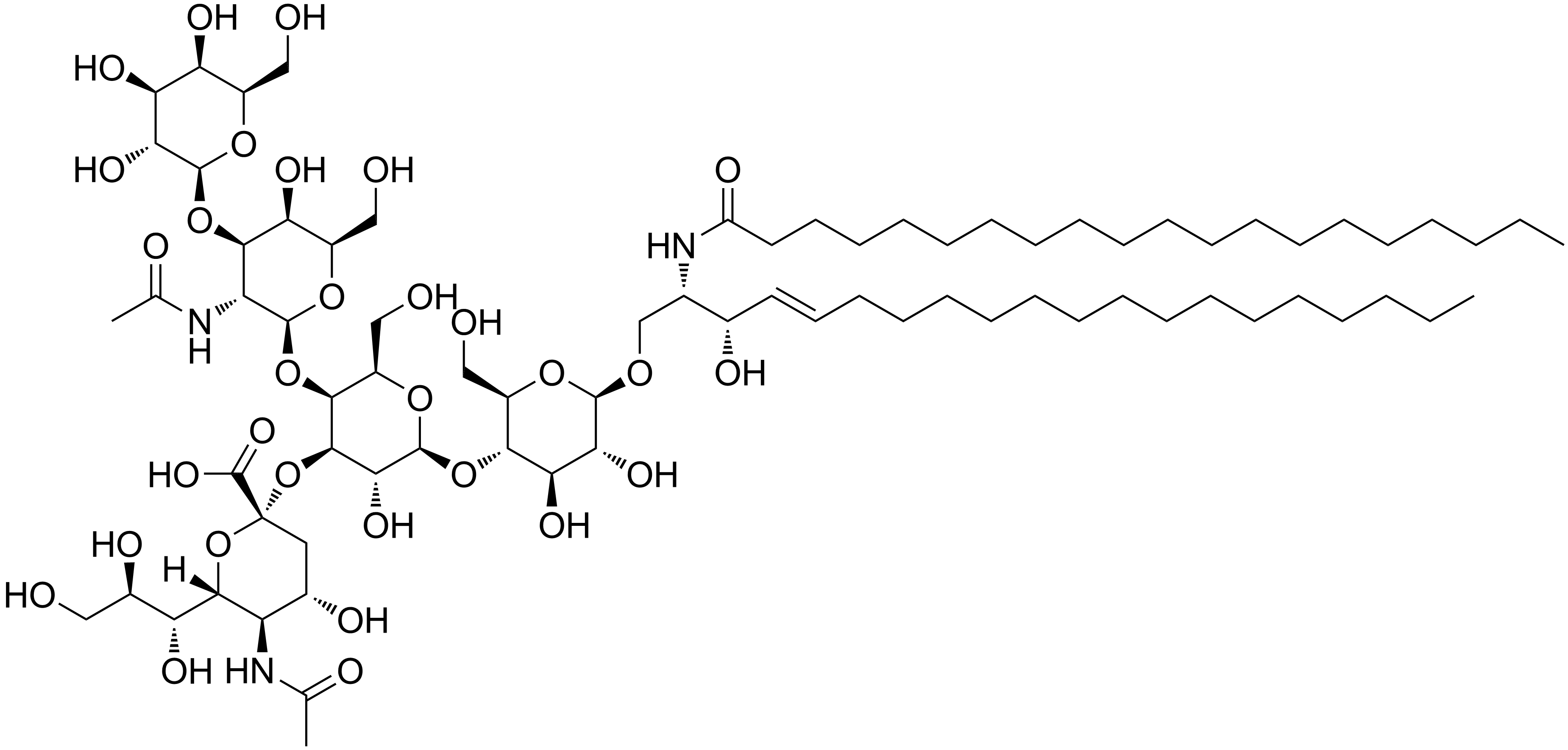Gangliosides Analysis Service
Gangliosides are a large class of complex lipids that are abundant in the neuronal cell membranes in the brain. These molecules consist of sphingolipids with one or more sialic acids attached to the sugar chain. As structural components of cell membranes, gangliosides have their two hydrocarbon chains embedded in the plasma membrane, while the oligosaccharides are located on the cell surface, serving as recognition points for extracellular substances or adjacent cells' surface molecules. The oligosaccharide groups act as surface markers, playing crucial roles in cell recognition, adhesion, and signal transduction.

Fonte: Wikipédia. 2010.
Figure 1. Structure of GM1 Ganglioside
Gangliosides provide neuroprotection by promoting neuronal development in newborns and are involved in memory and learning processes, though their mechanisms are not fully understood. Some researchers believe that gangliosides can protect cells from adverse extracellular conditions, such as low pH and degradative enzymes. They are known to facilitate interactions between cells, the extracellular matrix, and other cells. Additionally, gangliosides are implicated in cancer and Alzheimer's disease. During aging and certain neurodegenerative diseases, the distribution patterns of gangliosides change significantly. Notable alterations in ganglioside profiles have been observed in Alzheimer's disease, Parkinson's disease, Huntington's disease, HIV1-associated dementia, and lysosomal storage diseases.
Mass spectrometry techniques are widely employed to study gangliosides. MtoZ Biolabs offers reliable, rapid, and cost-effective ganglioside analysis services, utilizing highly stable, reproducible, and sensitive systems for separation, characterization, identification, and quantification.
How to order?







